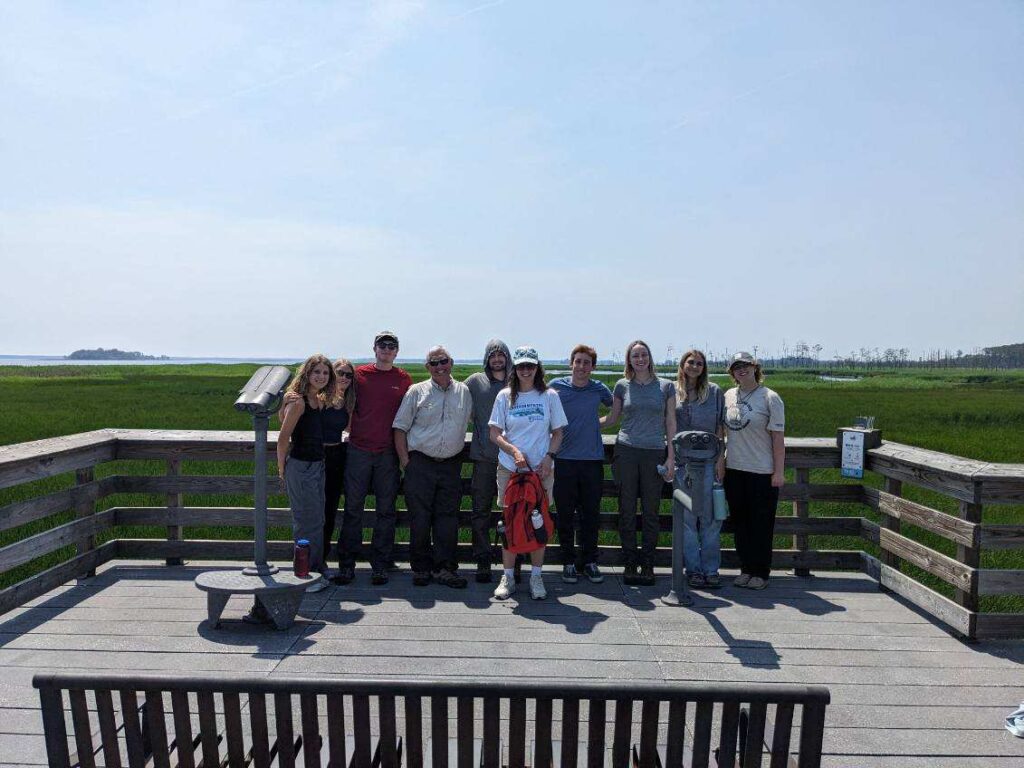
On June 12, 2025, the Coastal Critical Zone Network (CCZN) assembled in Cambridge, MD for our annual all-hands meeting, bringing together researchers, technicians, and undergraduate interns to create a space for interdisciplinary discussion of environmental research conducted since the prior summer.
The greater Critical Zone Network (CZN) funded by the National Science Foundation (NSF), investigates the complex environmental interactions in “critical zones,” the near-surface portion of the Earth system where life-sustaining resources meet. The Coastal Critical Zone Network (CCZN) Cluster project is led by the Delaware Environmental Institute (DENIN) Director Dr. Holly Michael and addresses saltwater intrusion into Mid-Atlantic coastal ecosystems, specifically landward expansion of coastal marshes into adjacent farmlands and forests.
At the meeting, the team presented and discussed findings on the impacts of sea level rise and saltwater intrusion, the process through which seawater is introduced to freshwater soils and aquifers. With effects ranging from agricultural, to ecological, to biogeochemical, to hydrological, gathering experts from many relevant fields of study in one room has helped the CCZN synthesize diverse findings into convergent ideas and trends that will shape future research.
2025 marks the end of the CZN, meaning this year’s meeting had two additional focuses: discussing our final reports, and identifying future project proposals. Researchers will need new funding to continue investigation. With five years of data and collaboration in the books, continuity is key to gaining new, long-term insights. Soon, principal investigators will pitch new NSF proposals that ask compelling questions stemming from an extensive body of CCZN research, furthering the investment we’ve put into our studies and each other’s work.
Along with these discussions, undergraduate interns took a field trip to the Blackwater National Wildlife Refuge, where they met with Matt Whitbeck, Supervisory Wildlife Biologist. Graduate student researchers also had the opportunity to present their own findings in a poster session.
